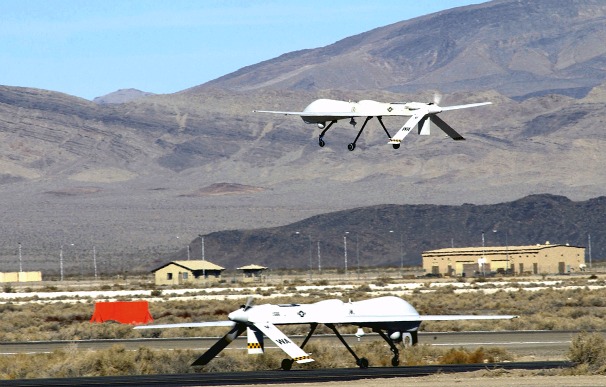Hi-Tech Surveillance Plus Old-Fashioned Intelligence Work Found Osama Bin Laden

Ten years ago, the American intelligence establishment still utilized technologies designed to follow Soviet tanks, not individual terrorists. Sept. 11 accelerated a shift to personal tracking that culminated last week when U.S. Navy SEALs gunned down Osama bin Laden in his Pakistani compound. Over the last decade, technologies that monitored phone calls, engaged in complex computer searches and provided constant drone surveillance isolated, disabled, and finally found the world's most wanted man.
More than simply finding bin Laden, advanced surveillance technology boxed in the al-Qaida leader. He knew that the U.S. could track his phone calls, watch his Internet traffic and follow his movements, so he avoided electronic communication and travel at all costs. That fear of technology turned bin Laden into a stationary target, and led him to create of a compound whose absence of incoming phone lines actually made it easier to identify.
"Overhead assets are very good at tracking machinery that looks different from other machinery, but not so good at tracking people that look different from other people," said Martin Libicki, an analyst in cyber issues for the Rand Corporation. "The compound had no Internet and no phone lines, which was strange. High technology narrows the list of options available to other people."
White House officials claim that the key to finding bin Laden came when a detainee gave up the name of Osama's main courier. Essentially, it began with the same kind of tip from an informant that begins even the most prosaic police investigations. However, enabled by developments in computer science and robotic aeronautics, intelligence officials could take the classic police procedures of wiretapping and stake outs, and expand them to a global reach.
Computer power has increased so substantially that the U.S. National Security Agency can -- and does -- search nearly all of the world's phone and email traffic for specific keywords, said John Pike, director of GlobalSecurity.org and an expert on defense technology and policy. When not listening, the U.S watches. Drone aircraft fill the sky by the hundreds, allowing American intelligence officers to follow targets of interest on a camera feed every minute of every day, Pike told InnovationNewsDaily. Some even credit a specially designed persistent camera system called "Gorgon Stare" for single-handedly reducing the scale of violence in Iraq.
The advances in computer and drone technology have also drastically reduced the cost of running wiretapping and airborne surveillance every hour of every day. The intelligence aspect of the operation that finally found bin Laden likely only cost a few million dollars, Pike said, a cost far below the expense of a single day of combat in Iraq or Afghanistan.
When combined, these two technologies allow intelligence officials to take the classic police procedures of wiretapping and stake outs and expand both to a global reach.
Sign up for the Live Science daily newsletter now
Get the world’s most fascinating discoveries delivered straight to your inbox.
"Persistent surveillance [by drone aircraft ], in particular, is the modern equivalent of good old- fashioned police work," Pike said. "It's a stakeout, isn't it? In the good old days, you'd park across the street and order in pizza. Well, the drone doesn’t need pizza."
Follow InnovationNewsDaily on twitter @News_Innovation, or on Facebook. This story was provided by InnovationNewsDaily, a sister site to LiveScience.
Science news this week: Possible signs of life on another planet and a 'useless' female organ
Universe may revolve once every 500 billion years — and that could solve a problem that threatened to break cosmology
Scientists hijacked the human eye to get it to see a brand-new color. It's called 'olo.'










